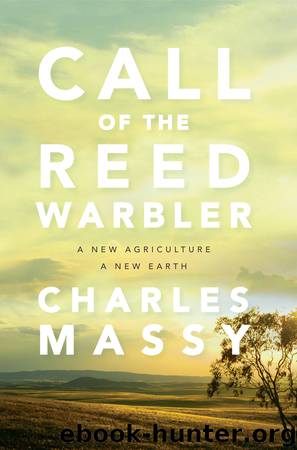Call of the Reed Warbler by Charles Massy

Author:Charles Massy
Language: eng
Format: epub, pdf
Publisher: University of Queensland Press
Indigenous fire-stick farming skills are not lost, as they reside with highly skilled Indigenous people in many regions. Furthermore, I believe that if we landscape managers wish to further understand the unique landscape and ecological functions and the Australian continent’s unique self-organising capacities then we need to begin to learn from, and work with, our Indigenous people – given the huge role of fire in the coevolved history of our landscapes, let alone facing up to the past reality of colonisation and the frontier wars.
To this end, we ran a ‘cool patch-burning’ day on our farm in April 2016. Our teacher was my friend, local Aboriginal elder Rod Mason: a highly skilled fire man (in addition to being a senior law-man).
The concept of ‘patch-burning’ in a ‘mosaic pattern’ has various names: ‘mosaic burning’; ‘cool patch-burning’; or just a ‘cool-season burn’. It means burning in a non-harmful way at the right time of the year to recycle nutrients, trigger germination of seed and control excess vegetation so as to create diversity and variegation in various patch sizes within the landscape.14 For our region, autumn is the best time to encourage vegetation function (such as seed/propagule germination) but not create an uncontrollable burn as in mid-summer with a dried-out fuel load.
As we have seen previously, Rod Mason already knew our country: its history, its spirituality, and its biological functions and species. Indeed, the first time I met Rod, on a two-day workshop some years ago, I had been puzzled at what I thought was his overemphasis on fire and the need to always be at ‘burning country’ (that is, to constantly but creatively use the ‘fire-stick’). But now I better understood and appreciated his focus on using fire to build – to ‘make’ and nourish country.
So, on that day in April, we burnt two large patches, and I intend to make this practice a regular part of my management.
Recently, Rod told me, ‘Making country always starts with fire. And that’s because many plants and vegetation communities need a burn. You can walk through healthy country, the soil is cool and the ground is spongy. It is the charcoal that makes it cool. And you can create health – in your rockeries, herberies, ferneries, shrubberies, thickets, grassland, and in making forests of straight and not crooked trees.’
Hard-line scientists would have challenged many things on that cool-burn day, yet somehow the gelling of two knowledge cultures seemed to work – as it always does if the conditions are right and people come with an open mind. And it seems to me we need this blending of the ‘two toolkits’ if we are to creatively manage and regenerate country.
It is too early to tell the results, but I know we need greater plant diversity; I know we need to further revive our landscape functions; I know there is too much exotic grass seed lying in the soil surface and subsurface (which fire can kill); and I know that by creating patch mosaics we can enhance
Download
This site does not store any files on its server. We only index and link to content provided by other sites. Please contact the content providers to delete copyright contents if any and email us, we'll remove relevant links or contents immediately.
The Lonely City by Olivia Laing(4565)
Animal Frequency by Melissa Alvarez(4147)
All Creatures Great and Small by James Herriot(3980)
Walking by Henry David Thoreau(3681)
Exit West by Mohsin Hamid(3632)
Origin Story: A Big History of Everything by David Christian(3470)
COSMOS by Carl Sagan(3346)
How to Read Water: Clues and Patterns from Puddles to the Sea (Natural Navigation) by Tristan Gooley(3236)
How to Do Nothing by Jenny Odell(3099)
The Inner Life of Animals by Peter Wohlleben(3097)
Hedgerow by John Wright(3095)
How to Read Nature by Tristan Gooley(3073)
Project Animal Farm: An Accidental Journey into the Secret World of Farming and the Truth About Our Food by Sonia Faruqi(3008)
Origin Story by David Christian(2990)
Water by Ian Miller(2950)
A Forest Journey by John Perlin(2909)
The Plant Messiah by Carlos Magdalena(2745)
A Wilder Time by William E. Glassley(2686)
Forests: A Very Short Introduction by Jaboury Ghazoul(2668)
